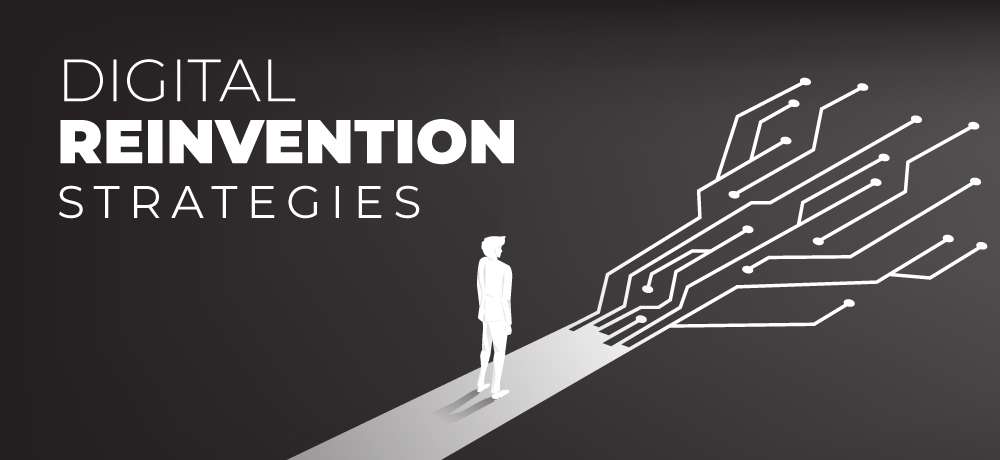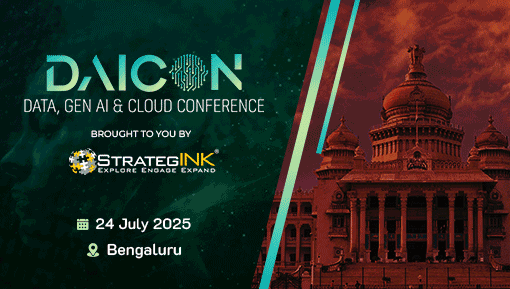
Vice President & Global Head- Oracle Consulting and Digital Service Line,
Tech Mahindra
Digital business reinvention is not a one day’s task. It requires constant effort and commitment. We are already seeing a series of transformative behaviors as businesses gear to reinvent themselves to move towards greater agility, innovation and promote business continuity.
2020 was undoubtedly a transformative year in many aspects. One of the key elements amongst the changes was a multi-fold acceleration in the adoption of digital technologies by businesses. In the wake of the pandemic, and the accompanying restrictions on movement, almost all leaders have moved in favour of digitizing their business. While the rapid transformation to digital technologies was a response to the spread of Covid-19, businesses must accept its relevance and continuance post the crisis as well. The pandemic has acted as a catalyst to promote business reinvention by leveraging digital transformation. 2021 is being heralded as a year to take it a step further. This year organizations will further accelerate their digital transformation efforts in a process driven and evidence backed manner aimed at creating a sustainable business.

Business reinvention: Redefining work, moving towards resilience
We are already seeing a series of transformative behaviors as businesses gear to reinvent themselves to move towards greater agility, innovation and promote continuity.
The pace of adoption and movement towards digitization will further accelerate. It will enable businesses to make better informed and faster decision in the VUCA (volatile, uncertain, complex and ambiguous) world. The acceleration in digitization and innovation will be reflected across B2B and B2C players with a focus on automation, changing the nature and scope of work.
Digital transformation will grow exponentially in the healthcare domain, pushing it to pivot to adapt to the unprecedented needs and expectations. 2021 will further accentuate the commitment to digital healthcare by leveraging automation and intelligence. The focus will be to promote personalized healthcare with a unique solution for each patient.
While automation has been on the cards, the pandemic has vastly accelerated the trend with far ranging implications for the future of work. There will be an increase in the number of jobs which will require different skills. However, the interim period during the transition will be challenges. At the same time, remote work across global boundaries will be a reality in the long haul with a significant part of in-person operations.
Building resilience and efficiency will be one of top priorities for businesses by leveraging AI, Big Data, IoT, and other technological drivers. Organizations will adopt a digital-first approach for its direct impact on business continuity as technology can be a path to sustaining critical business operations.
Data capital management and the role of AI
Across businesses, data & AI are being referred to as two weapons of growth and reinvention. Data is increasingly being treated as a capital and its management as any other business asset will continue this year.
Robust data capital management focuses on data supply chain where businesses need the right data repositories and pipelines to meet business needs, both for internal functioning as well as consumers and operations. This is followed by data management of high-quality, trusted data at scale to ensure that data once curated and shaped is readily available. Finally, data governance comes to the front which is the core competency in managing business metadata and the design of cross-functional models for collaboration.
Conventionally, data management is a human labor-intensive process making scalability a challenge. Fortunately, AI has the potential to scale data management with lowering costs and improving quality. There are several ways in which AI will completely transform data capital management to redefine digital reinvention for businesses in 2021.
AI will gradually bring down the time required to curate raw data and shape it into usable forms for consumer and operational needs. Once the data is harnessed, the cost of data build and operations will decrease time which will be accompanied by a reduction in cost. As data build and operations scale in volume, the cost will come down exponentially. Finally, the data curated and shaped leveraging AI, ML, NLP will be of a higher quality, with elimination of human error.
Fuelling the next normal: Converting challenges into opportunities
To adapt to the new normal, businesses will need to turn challenges into opportunities and address concerns around customer needs, human like interactions, digital innovation, supply chain reinvention and variable cost structures. The ability of the companies to reinvent in 2021 by envisioning the new ways of operations to weather the crises and to lead in the next normal will depend on:
- Changing customers’ needs in the post COVID-19 world and the potential of businesses to reinvent themselves to ride the digital waves. It will accelerate investment in ‘Self-Service Touchless Technologies’ in response to changing customer needs.
- Due to the unmet human needs many companies will start creating human like interactions with customers whom they have never physically seen or met. In such a situation, digital reinvention of businesses calls for investment in artificial intelligence and analytics tools to create human like interactions with customers to improve business operations.
- Niche product offerings have taken a big leap since 2020 by delivering innovative digital offerings within days or weeks which many legacy companies failed to deliver from years due to the leap frogging. To further accentuate their efforts, companies must deploy ‘design thinking’ to deliver innovative digital offerings within a short span of time.
- As the world is becoming more connected and personal most of the supply chain has also undergone significant transformation. There is a need to seek flexibility with variable cost base, create resilient supply chains and design structural performance improvement programs to shift operations to variable cost structures.
Digital business reinvention is not a one day’s task. It requires constant effort and commitment. As a first step, organizations must align their business goals with a digital-first model to create organization wide buy-in. Following this, the above-mentioned strategies and tactics can play an integral role in paving the way for innovation, success and growth leveraging digital capabilities.




